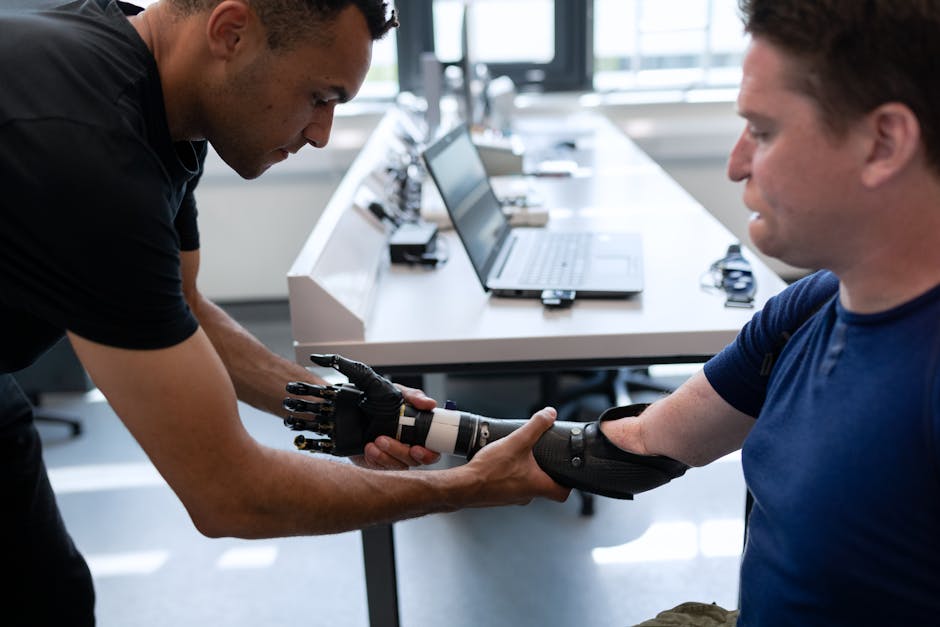The Physical Legacy: Health Benefits That Last Long After the Academy Years
‘He’s been home from training for an hour and he’s still doing push-ups in his bedroom,’ laughs Sarah, mother of 14-year-old academy player Liam. ‘The fitness habit is so ingrained now, I think he’ll still be doing it when he’s 40!’
Sarah might be more right than she realises. While parents naturally focus on the immediate challenges and rewards of academy football—the technical development, the competitive matches, the dream of a professional contract—there’s a significant but often overlooked benefit quietly taking shape: a lifetime foundation of physical health and fitness literacy.
Long after the final academy match, regardless of whether a professional career materialises, the physical benefits continue paying dividends well into adulthood and beyond.
The Fitness Foundations That Last a Lifetime

When Tom was released from a Championship club’s academy at 16, he was devastated. Football had been his identity, his passion, and his planned future. Now, at 32, he reflects on what truly lasted from those academy years:
‘Obviously, I was gutted when I didn’t get a scholarship. But looking back, what really stuck with me wasn’t the technical skills or tactics—it was understanding how my body works, how to train effectively, how nutrition affects performance, and simply the habit of staying active.
‘I see friends my age already struggling with their weight, getting out of breath climbing stairs, and I realise the academy gave me a massive head start in physical health that I’ll benefit from for life.’
The Scientific Support

Research backs up Tom’s experience. Studies show that structured sports participation during youth establishes patterns that continue into adulthood:
- Youth athletes are 8 times more likely to be physically active at age 24 than non-athletes
- Bone density developed during teenage years creates a ‘bone bank’ that reduces osteoporosis risk later in life
- Cardiovascular fitness habits established in youth lead to significantly lower rates of heart disease in middle age
- Motor skills and coordination developed through sport remain partially intact even during long periods of inactivity
Beyond Just Fitness: A Complete Physical Education

Academy football provides far more than just general exercise—it’s a comprehensive physical education that many non-academy children simply don’t receive.
The Physical Curriculum of Academy Football
| Physical Aspect | What Academy Players Learn | Long-Term Benefit |
|---|---|---|
| Cardiovascular fitness | Proper warmup techniques, interval training, recovery methods | Efficient exercise habits for life, understanding heart rate zones |
| Strength development | Age-appropriate strength training, bodyweight exercises, core stability | Proper form and technique that prevents injury in adult exercise |
| Flexibility & mobility | Dynamic stretching routines, injury prevention exercises | Maintaining mobility into middle age, reduced back/joint problems |
| Nutrition | Meal timing, hydration, appropriate fuelling for activity | Healthier relationship with food, understanding nutrition beyond fad diets |
| Recovery | Sleep hygiene, active recovery, stress management | Tools to maintain physical wellness during adult work pressures |
| Body awareness | Proprioception, balance, coordination | Reduced fall risk with age, better physical confidence |
James, a physiotherapist who works with both youth academies and adult clients, observes: ‘The difference between former academy players and the general population in their 30s and 40s is striking. The ex-academy guys usually maintain a baseline of fitness, have better movement patterns, and understand how to exercise effectively even with limited time.’
The Weight Management Advantage

In a country where over 60% of adults are overweight or obese, former academy players often have a significant advantage in maintaining healthy body composition throughout life.
This stems from several factors:
-
Metabolic understanding: Academy players learn about energy systems and how different types of exercise affect their bodies
-
Normalised routine exercise: Daily physical activity becomes a non-negotiable habit rather than a chore
-
Enjoyment of movement: Years of team sports often foster a genuine enjoyment of physical activity that makes maintenance easier
-
Body awareness: Better recognition of how different foods and activity levels affect their bodies
Mark, now 45, spent five years in a Premier League academy before being released at 16. ‘I’ve never had to ‘go on a diet’ in my life,’ he explains. ‘The habits formed during those academy years—regular exercise, sensible eating, listening to my body—just became part of who I am. Even during busy periods with work and family, I prioritise staying active because it feels abnormal not to.’
The Mental Health Connexion

The physical benefits of academy training extend into mental wellbeing too. Research consistently shows that regular physical activity:
- Reduces anxiety and depression risk
- Improves sleep quality
- Boosts cognitive function
- Enhances mood through endorphin release
- Builds resilience to stress
Former academy players often intuitively understand the connexion between physical activity and mental state, using exercise as a stress management tool throughout adulthood.
‘When work gets intense, I know a run or a five-a-side game will reset my head,’ says Chris, who left academy football at 15. ‘That’s something I learnt during academy days—physical outlet equals mental relief. Some of my colleagues reach for a drink when stressed; I reach for my running shoes.’
Not Just Football: Multi-Sport Transition

One interesting pattern amongst former academy players is their ability to excel in other sports after their football journey ends.
James switched to rugby after leaving a Championship club academy and played semi-professionally while attending university. ‘The fitness baseline, coordination, and competitive mindset transferred perfectly,’ he explains.
Others find success in:
- Athletics (particularly middle-distance running)
- Cricket
- Basketball
- Individual sports like cycling, swimming, or golf
- Obstacle course racing and endurance events
This adaptability stems from the well-rounded physical literacy developed in quality football academies, where fundamental movement skills receive as much attention as football-specific techniques.
Physical Confidence and Its Ripple Effects

Beyond measurable fitness, academy experience often instils a physical confidence that influences many aspects of life.
Dr. Helen Thompson, a sports psychologist, explains: ‘Physical confidence—the belief in your body’s capabilities—affects everything from how you carry yourself in a job interview to your willingness to try new activities throughout life. Academy athletes develop this embodied confidence in ways that extend far beyond sport.’
This confidence often manifests in:
- Willingness to step outside comfort zones in physical challenges
- Leadership presence in professional settings
- Resilience during physically demanding life situations
- Positive body image and relationship with physical self
Healthier Ageing Trajectory

Perhaps the most significant long-term physical benefit appears later in life, as former academy players often experience healthier ageing compared to peers.
Research on former competitive athletes shows they typically maintain:
- Better cardiovascular health in middle age
- Superior bone density into older adulthood
- Greater muscle mass retention
- Better balance and coordination (reducing fall risk)
- Lower rates of type 2 diabetes
‘We can often spot former academy players in our over-50s fitness classes,’ notes Steve, a personal trainer specialising in older adult fitness. ‘There’s a physical literacy and body awareness that’s been maintained even decades after their competitive days ended.’
Passing It On: The Intergenerational Effect

An often-overlooked benefit is how former academy players influence their own children’s physical development.
Simon, released at 16, now coaches his daughter’s youth team: ‘I apply so much of what I learnt in the academy—proper warmups, age-appropriate drills, focus on fundamental movement skills. My academy experience didn’t make me a pro, but it’s made me a much better coach and parent for my kids’ physical development.’
This knowledge transfer creates a ripple effect where the physical literacy gained in academies benefits the next generation, regardless of whether they pursue football themselves.
Making the Most of the Physical Legacy

For parents of current academy players, understanding this long-term physical dividend can help frame the experience beyond just football outcomes.
Maximising the Long-Term Physical Benefits
-
Emphasise transferable physical skills: Encourage your son to understand how fitness components apply beyond football
-
Highlight physical literacy: Discuss how understanding movement principles, nutrition, and recovery will serve him throughout life
-
Foster enjoyment of physical activity: Help maintain the joy of movement rather than making it feel like a obligation
-
Encourage cross-training: Support participation in complementary physical activities when academy schedules allow
-
Make connexions explicit: Help your son recognise how academy training improves everyday physical capacity and confidence
When the Academy Years End

If your son leaves the academy system (as most eventually will), consider these approaches to maintain the physical benefits:
-
Find a new sporting home: Whether it’s lower-level football, a different sport entirely, or recreational leagues, maintaining the social aspect of sport often helps preserve physical habits
-
Translate team training to individual fitness: Help him adapt academy warmups and conditioning to self-directed workouts
-
Maintain the routine: Encourage scheduling regular physical activity, just as academy training was scheduled
-
Explore coaching or mentoring: Many former academy players find satisfaction in helping younger athletes develop
-
Set new physical challenges: Events like half-marathons, triathlons, or adventure races can provide motivating goals
The Ultimate Physical Legacy

David, now 50, spent his early teens at an academy before being released. Three decades later, he reflected on what truly lasted:
‘At the time, not making it as a pro seemed like the ultimate failure. Now I realise the academy gave me something more valuable—it taught me how to live in my body. How to move well, eat well, recover well. Looking at school friends who never had that physical education, I see the difference in quality of life as we age.
‘My son asked me recently if I regretted ‘wasting’ those years in the academy when I didn’t become a footballer. I told him those years might be why I’m still playing five-a-side with him at 50 instead of watching from the sidelines with a bad back and extra three stone.’
Whether your son is just starting his academy journey or nearing its conclusion, remember that the physical foundation being built will serve him long after the final academy whistle blows. The habits, knowledge, and embodied confidence developed through academy training represent a health investment that continues paying returns throughout life.
As one academy coach puts it: ‘We’re not just developing footballers—we’re developing humans who’ll spend decades living in these bodies we’re helping them understand. If they leave here knowing how to care for and use their physical selves effectively, that’s a win regardless of their football outcome.’
How has academy football shaped your child’s relationship with physical health and fitness? We’d luv to hear your experiences in the comments below, or get in touch with us directly to share your academy journey.
Contact us to discuss our services now!
